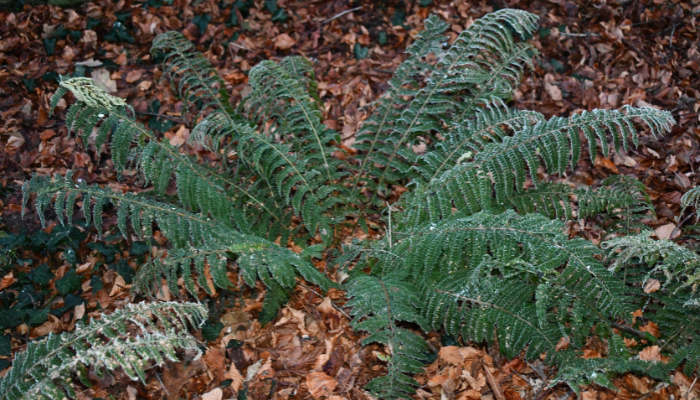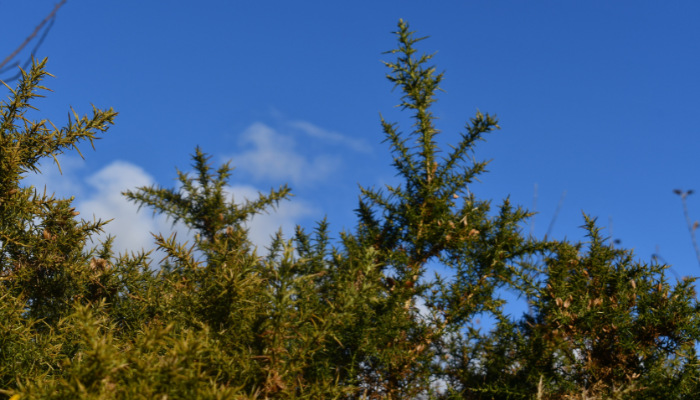07 January 2023
Growing Wild – Whins and Ferns

Catherine Keena, Teagasc Countryside Management Specialist takes a closer look at some of our native Irish biodiversity to look out for in the countryside.
Whins
Look out for whins – immortalised in Patrick Kavanagh’s Childhood Christmas when he ‘looked and three whin bushes rode across the horizon – the three Wise Kings’. Studying this poem for the Leaving Certificate many years ago, I did not recognise the whins as being what we knew as furze in Offaly. Later when reading botany books predominantly by non-Irish authors, the anglicised name gorse became familiar, also used in eastern counties. Hence the reason why plants have latin names. Whether whin, furze or gorse, it is part of our literary heritage and our native Irish biodiversity.
Ferns
Look out for ferns, evergreen in the bleak mid-winter, a spectacular sight when adorned with white frost sparkling in the winter sunshine. Ferns are plants without flowers reproducing by spores not seeds. Fern leaves are called fronds and are tightly coiled when young, unwinding the coil as they expand. Spores are produced on the underside of fronds. There are many species of native Irish ferns. Bracken is a fern and is native but can cause problems for farming and habitats where it displaces other vegetation. Large triangular fronds on erect stalks up to 2 m tall turn brown in winter. Ferns are a different component of our native Irish biodiversity.
See previous Growing Wild articles below:
- Growing Wild – Rose Hips and Flowering Ivy
- Growing Wild – Yarrow and Herb Robert
- Growing Wild – Elderberries and Blackberries
- Growing Wild – Haws and Spindle
- Growing wild – Guelder Rose and Sloes
- Growing wild – Purple loosestrife and Lord and Ladies
- Growing Wild – willowherb and water mint
- Growing Wild – dandelion and greater stitchwort
- Growing Wild – willow, primrose and lady’s smock
- Growing Wild – whitethorn and cow parsley
- Growing Wild – bluebells and guelder rose
- Growing wild – Honeysuckle and Foxglove
- Growing Wild – Elder and Ragged Robin
- Growing wild – dog rose and meadowsweet
- Growing wild – Privet and Lady’s Bedstraw
- Growing Wild – Bird’s foot trefoil and Knapweed
Keep an eye on Teagasc Daily for another Growing Wild later in the month. Learn more from Teagasc about Biodiversity & Countryside

